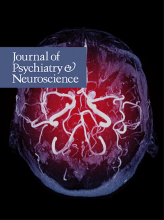We are pleased to see the critical commentary by Hofmann and we provide a brief response to this critique.
The first concern seems to be related to our argument that mental illness involves the self in different ways than other medical disorders, such as diabetes. We have clearly argued that the difference is that mental illness affects the very core of self and that it is in essence a disorder of the self. Of course other medical disorders, including cancer — an example used by Hoffman — indeed affect the self, but they are not disorders of the self and do not affect the very core of what constitutes self.
The second argument is regarding the neurological basis of mental disorders. We have not claimed in our editorial that there is no neurobiological basis of mental illness. On the contrary, we have acknowledged the important contribution made by neurosciences in explaining many of the “uniquely human phenomena, such as memory, thinking,” etc. First, we have emphasized 2 points in relation to neurobiology. One is that at this stage many of the experiences described by patients with mental disorders are not explained by neurobiology and that even if 1 day they were, we would still need to understand mental illness in psychological terms.1 The other issue is related to the extent to which predominantly neurobiological explanations of mental disorders have failed to have any positive impact on reducing stigma among the public, contrary to expectations.
In response to the argument about “the danger of exceptionalism,” we had clearly indicated at the beginning of the article that it was not our intention to argue for or against the biological basis of mental illness, but rather “to examine the clinical and public utility of presenting a dominant neurobiological model of mental illness.” We do not believe this, in any way, makes mental illness an exception, but rather offers an evidence-based approach to what the public needs to know about mental illness. This should be based on all the facts and not on a selective explanatory model.
We hope that these clarifications address some of the issues raised in the letter from Hofmann.









